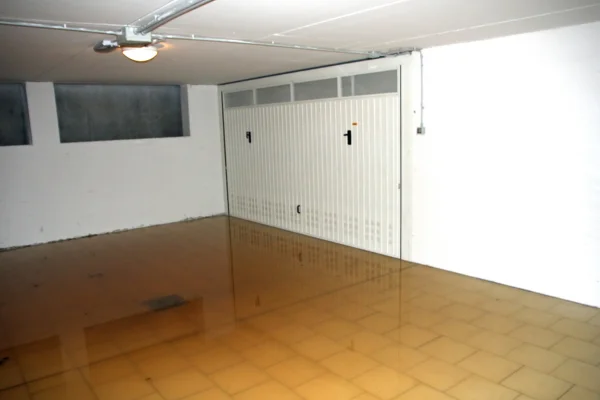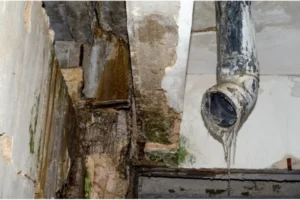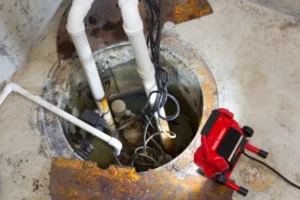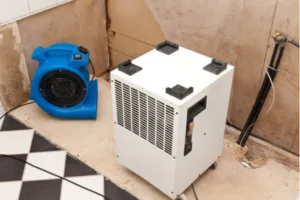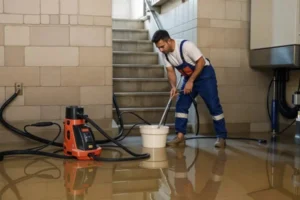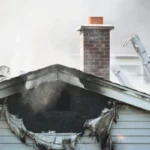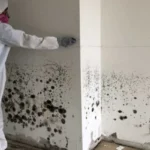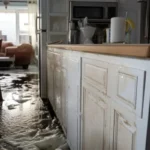We all understand how much work goes into maintaining a safe and comfortable home, but even something as preventable as a flooded basement can quickly upset that balance. Basement water damage isn’t just an inconvenience—it can lead to costly repairs, mold growth, and even pose health risks if left unaddressed. The good news is that with a few proactive steps, you can protect your basement before problems start.
From simple tasks like clearing your gutters to ensuring the ground around your home slopes away from the foundation, small, regular actions can make a big difference. Let’s walk through practical strategies you can use to keep your basement dry, safe, and worry-free.
Let’s take a closer look at what is involved in basement flood clean up and how to avoid needing services focused on water removal from basement spaces in the future!
Understanding Basement Water Damage
Before you start preventing water issues, it helps to understand what causes water damage, how to spot it early, and why acting fast matters. Ignoring early signs of moisture can lead to structural problems, mold, and poor indoor air quality.
Common Causes of Water Damage in Basements
Several factors often contribute to basement water issues:
- Poor drainage systems that fail to divert rainwater away from your home.
- Cracks in foundation walls or floors, allowing water to seep inside.
- High groundwater levels push moisture into basements.
Identifying these causes early allows you to take steps that protect your home and prevent costly disasters down the line.
Signs of Water Damage in Your Basement
Homeowners like you should be vigilant for warning signs of water damage in basement areas:
- Damp spots on walls or floors.
- Musty odors.
- Mold or mildew growth.
- Cracks in foundation walls or floors.
- Peeling paint or wallpaper.
Noticing these warning signs early means you can intervene before minor moisture problems turn into major water damage.
Risks Associated with Ignoring Water Damage
Neglecting basement water problems can lead to serious consequences, such as:
- Structural damage that requires costly repairs.
- Mold and mildew can affect health.
- Lower property value if buyers detect water problems.
Timely basement water damage restoration is essential for protecting your home and family.
Preventing Basement Water Damage
Preventing water damage involves addressing risks both outside and inside your home. With a combination of grading, drainage, waterproofing, and ventilation, you can significantly reduce the chances of flooding or moisture issues.
Proper Grading and Exterior Drainage
One of the most effective ways to prevent water damage is to ensure the ground around your home slopes away from the foundation, directing water outward. Keep gutters clear, check downspouts, and maintain drainage systems regularly. Proper grading and drainage are your first line of defense against basement flooding.
Installing and Maintaining a Sump Pump
Even with effective grading, a sump pump provides an added layer of protection against basement floods. Regularly test and maintain the pump to ensure it functions during heavy rain, making water removal from basement spaces much easier.
Sealing Basement Walls and Floors
Apply waterproof sealants to walls and floors to prevent moisture from entering. Regularly check for cracks, and consider professional assistance for the best results. Sealing reduces long-term risk and helps maintain a dry basement environment.
Routine Plumbing and Roof Inspections
Leaks from plumbing or roof issues often contribute to water damage. Inspect pipes, fittings, shingles, and gutters periodically to prevent water intrusion. Promptly addressing problems minimizes repair costs and secures your basement.
Using Dehumidifiers and Proper Ventilation
Maintaining proper humidity and airflow is crucial. Run dehumidifiers in humid months, install vents or exhaust fans, and seal openings to prevent moisture accumulation. These steps limit mold growth and maintain healthy basement conditions.
Handling Existing Water Damage in the Basement
If your basement is already experiencing water issues, acting quickly is essential to minimize damage and prevent mold or structural problems.
Emergency Water Removal from Basement
If flooding occurs, first turn off electricity (if safe) and move valuables to higher ground. Use a sump pump or wet/dry vacuum to remove standing water, ventilate the space, check if there’s physical damage, and disinfect surfaces to prevent mold.
Basement Flood Clean-Up Tips
A systematic approach helps make cleanup manageable:
- Remove water with pumps or vacuums.
- Dry affected areas using fans and dehumidifiers.
- Disinfect surfaces to prevent mold growth.
- Inspect for structural damage.
- Document damage for insurance purposes.
Professional Basement Water Damage Restoration
Extensive flooding may require professional restoration. Certified experts assess damage, use specialized equipment for drying, prevent mold, and restore the basement to safe, usable conditions.
Long-Term Basement Protection Strategies
For lasting protection, combine waterproofing with protective devices like sump pumps, backflow valves, and flood barriers. Regular monitoring helps catch potential issues before they escalate.
Waterproofing Solutions
Consider these strategies to enhance your basement’s defenses:
- Apply sealants on walls and floors to prevent moisture intrusion.
- Install a sump pump to manage excess water.
- Use drainage systems to direct water away from your foundation.
Installing Backflow Valves and Flood Barriers
While many homeowners focus on waterproofing their basements, installing backflow valves and flood barriers can provide an extra layer of protection against water damage. Backflow valves prevent sewage backups, and flood barriers block external water. Professional installation ensures these systems are effective, safeguarding your basement.
Regular Maintenance and Monitoring
After installing backflow valves and flood barriers, maintaining these systems and monitoring your basement regularly is essential for long-term protection against water damage:
- Inspect valves, barriers, and drainage quarterly.
- Monitor for moisture or mold monthly.
- Clean gutters and downspouts regularly.
When to Call a Professional
Knowing when to bring in a professional is essential to prevent further damage. If leaks, flooding, or mold persist despite your efforts, expert help ensures safe, effective restoration.
Indicators You Need Expert Assistance
How can you tell when it’s time to bring in a professional for basement water issues? Watch for these key signs:
- Persistent dampness or musty odors that won’t go away.
- Visible mold growth or water stains on walls and ceilings.
- Water pooling or flooding after heavy rain.
Choosing a Certified Water Damage Restoration Service
When you’re facing basement water issues, choosing a certified restoration service can make all the difference in effectively addressing the problem. Look for companies with proven expertise, positive reviews, and proper licenses. Verify they use advanced equipment and follow industry standards for restoration. Don’t hesitate to ask for references or check their certifications to guarantee you’re making a well-informed decision.
Insurance Considerations for Basement Water Damage
Knowing what’s covered by your insurance policy can save you time and money:
- Check coverage for flooding or heavy rain damage.
- Understand replacement costs vs. actual cash value.
- Review your deductible to match potential repair expenses.
Conclusion: Keep Your Basement Dry, Safe, and Protected
Avoiding basement water damage requires proactive steps. Proper grading, sump pumps, sealants, ventilation, and routine inspections significantly reduce risk. If water issues arise, act quickly with emergency removal or professional restoration.
By staying vigilant, monitoring conditions, and implementing these strategies, you’ll maintain a dry, safe basement and protect your home for years to come. Prevent costly damage – Get your basement assessed by professionals today!

